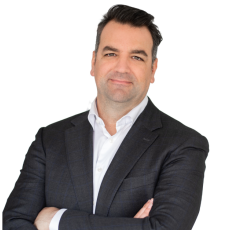Dan, what is your take on the famous gold-silver ratio? What explains the current anomaly?
The average gold-silver ratio over the last 35 years has been about 65 to 1. Currently, it is around 80. During the last monetary bull run, silver reached a ratio of about 36 to 1. Silver is unique because it has both industrial and precious metal components. Historically, when gold prices move, silver tends to lag and then overshoot. We are starting to see a bit of a bull market in gold, which recently hit all-time highs over $2,400. Silver, on the other hand, has not taken off in the same way as gold.
The industrial demand of silver has grown significantly over the last 15 years. At that time, we produced about 800 million ounces of silver annually, and today it remains near those 800 million ounces.
The Silver Institute, of which I am a member, has reported a deficit in the silver market over the last three to four years, and we expect this deficit to continue in 2024.
This situation suggests that the gold-silver ratio will contract. I anticipate that silver will eventually catch up and possibly overshoot gold, especially after we get past the US election. We could see the ratio drop to 50 to 1, which would mean silver prices rising significantly if gold remains high.
Are global silver suppliers, such as Endeavour Silver, capable of responding to that growing industrial demand by ramping up production, especially considering the green transition?
Silver primarily comes as a byproduct of gold, lead, zinc, and copper mines, with only about 30% being from primary silver mining. Most primary silver mines are relatively small, producing 3 to 5 million ounces, and there are not many levers to quickly increase production. Bringing new mines online is challenging due to a lack of capital investment in the junior space over the last decade and stricter sustainability and governance requirements. For instance, our Terronera discovery in 2013 will go into full production in 2025, which is a 12-year timeline from discovery to production.
Even increasing production from existing mines is not quick. If copper prices rise significantly, we might see more silver as a byproduct, but silver itself does not drive those decisions. So, while we might see some increase in recycling, the supply side cannot quickly adjust to price changes. We are very much price takers in the silver market. However, when prices do rise, it can significantly boost profitability for mining companies.
Before we discuss Terronera, which you are about to bring online, could you say a few words about your mines currently in operation?
Our two operations, Guanaceevi and Bolañitos, are based in Mexico, specifically in the states of Durango and Guanajuato. Both of our existing operations are epithermal vein systems, which means we mine vein structures, continuously mining new chutes along the vein, similar to moving along a necklace to the next bead. We have been operating Guanacevi for 18 years and Bolañitos for 17 years. These old districts had underexplored mines when we acquired them, but we had the expertise and capital to bring them back online. Before 1993, foreign ownership of mineral deposits in Mexico was limited, but that changed with NAFTA, allowing us to leverage our knowledge and resources.
Guanacevi and Bolañitos have been crucial for us, but they are mature assets now. We estimate having four to seven years left in Guanacevi and three to five years in Bolañitos. Despite being mature, we continue to make new discoveries and can exploit old areas with higher prices. Currently, we produce about 5 million ounces of silver and 35,000 ounces of gold annually, with no base metal production. These operations have allowed us to build a strong company with 1,800 employees and robust infrastructure to support growth.
Let's talk about Terronera. You described it as ‘the silver mine of the future’. You have even dedicated a website for it…
The Terronera project will effectively double our production and cut our cost profile in half. It is located in the state of Jalisco, near Puerto Vallarta, in a region that hosts five towns located near the project site. We have created a dedicated Terronera website to ensure that the locals in the region are informed of the details of the project, while addressing any questions or concerns they may have.
Most of the technological aspects we are using are similar to those at Guanacevi and Bolañitos, including underground mining techniques. Terronera will be a significant project for us, producing about 4.5 million ounces of silver and 35,000 ounces of gold annually. Over its 10-year mine life, we expect it to be a relatively low-cost mine, effectively providing silver for free after gold revenues cover costs.
Once Terronera is in production, you aim to become a senior silver producer. Could you explain what that entails and how you plan to achieve it?
Our goal is to reach 25 million ounces of silver equivalent production, which we believe would classify us as a senior silver producer. Achieving this scale gives us a certain cache. Beyond Terronera, we have another project in Mexico called Pitarrilla, which is a mesothermal system. We are looking at it from an underground standpoint and believe it could produce 6 to 8 million ounces of silver annually, plus lead and zinc.
We believe that having these projects in our pipeline will help us reach the goal of being viewed as a senior silver producer. Our strategy involves leveraging our current assets while advancing new projects to increase our production capacity and efficiency.
All your mines are in Mexico. Do you feel enough support for mining in the country?
It has been a more difficult six years under AMLO for the Mexican mining industry. There have been mining reforms that were implemented in an unusual manner, bypassing the proper legislative process. Despite the challenges, some of these reforms, like increased compliance around water, are necessary improvements.
The reduction in concessions from 50 years to 30 years is notable. While this has made mining more complex, we have the necessary support structures like environmental and legal departments in place, so the impact on us is minimal. Stricter environmental standards and more rigorous reporting are positive for the industry and Mexico, even if they mean more work for us. Operating with integrity and maintaining good community relations are crucial for us to continue working effectively in Mexico.
Claudia Sheinbaum, AMLO’s successor, is expected to be more pro-business and pro-mining, however that will be determined when she takes office in November.
Do you uphold the same strict sustainability standards in Mexico that you would if you were operating in Canada or the U.S.?
Yes, we do. We have a policy to maintain the same standards as in Canada, including reclamation responsibilities. Although we operate epithermal vein systems, which involve relatively low costs for reclamation, we recognize the importance of being responsible neighbors. Maintaining good relationships with local communities is essential. If we lose our social license in one area, it could impact future projects.
Do you have plans about going elsewhere in the future?
Yes, we are already in Nevada with a small project called Bruner, which has a defined historical resource of 300,000 ounces of gold and 13 million ounces of silver. We acquired it from a junior exploration company for $10 million. Despite its potential, it has been lower on our priority list due to our focus on the Pitarrilla project. We are also in Chile, where we have been exploring for silver for almost a decade and have several promising projects.
While we are not opposed to expanding beyond Mexico, our primary focus remains there due to our competitive advantages, including infrastructure and a skilled exploration team.





